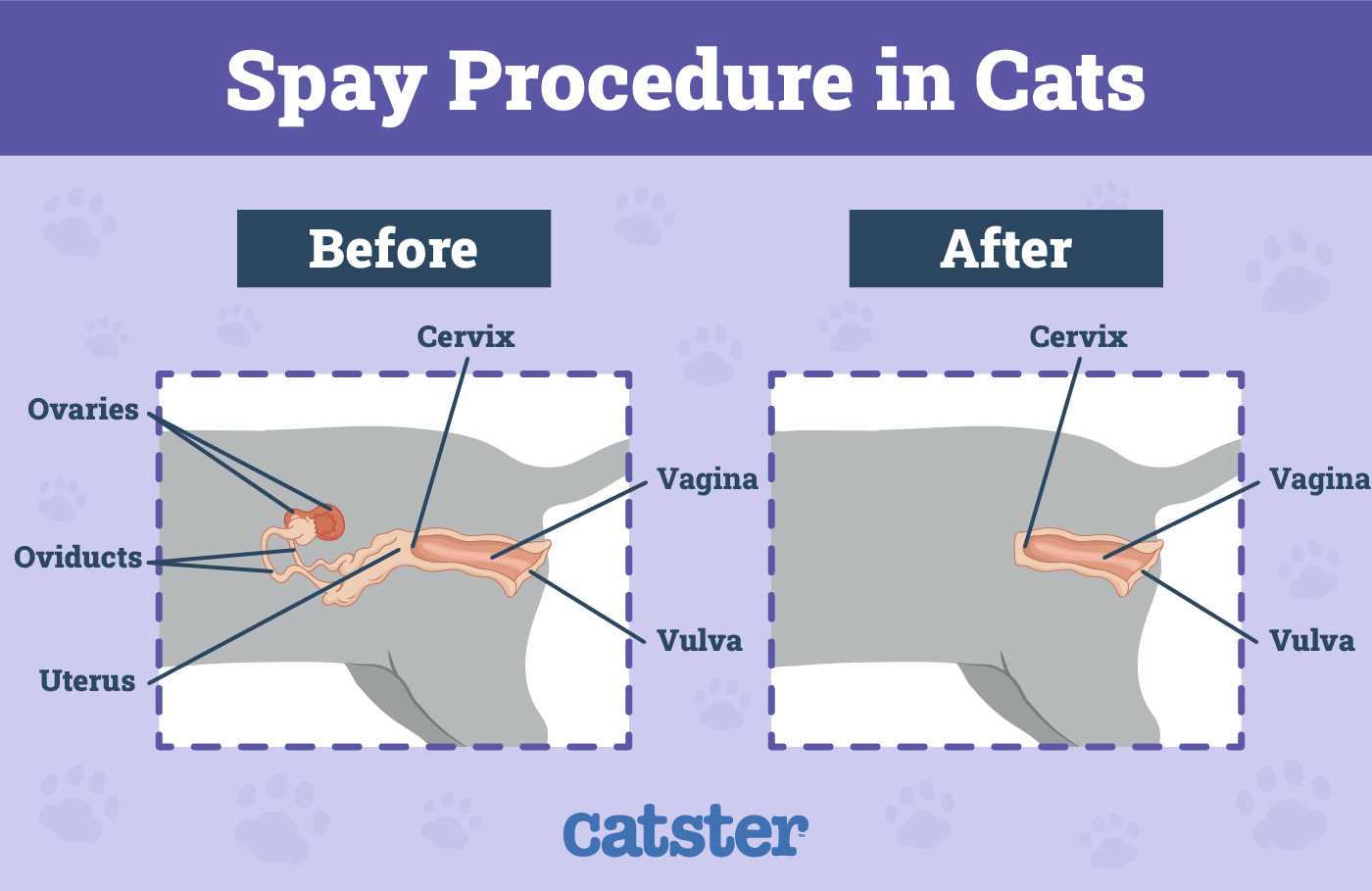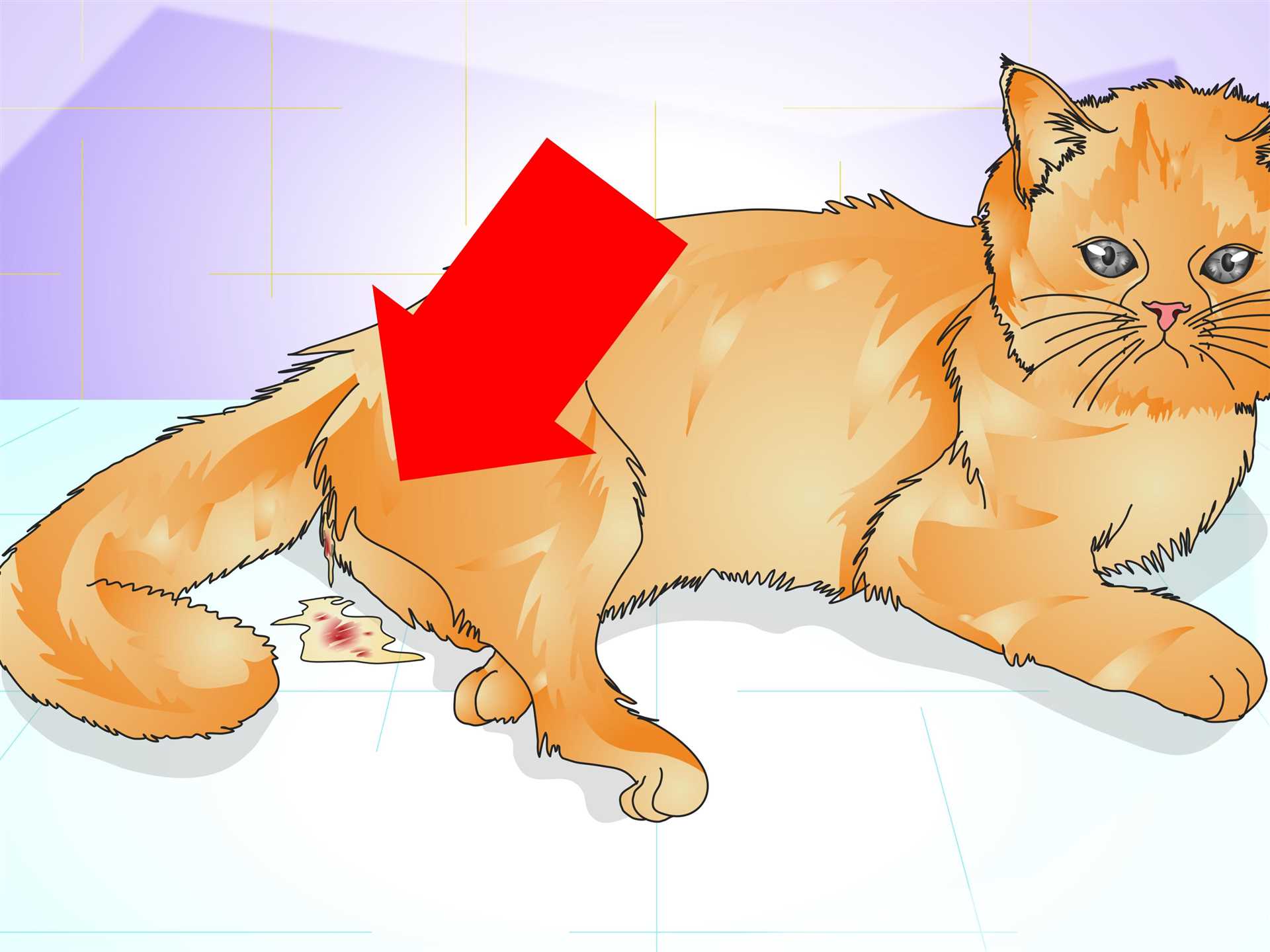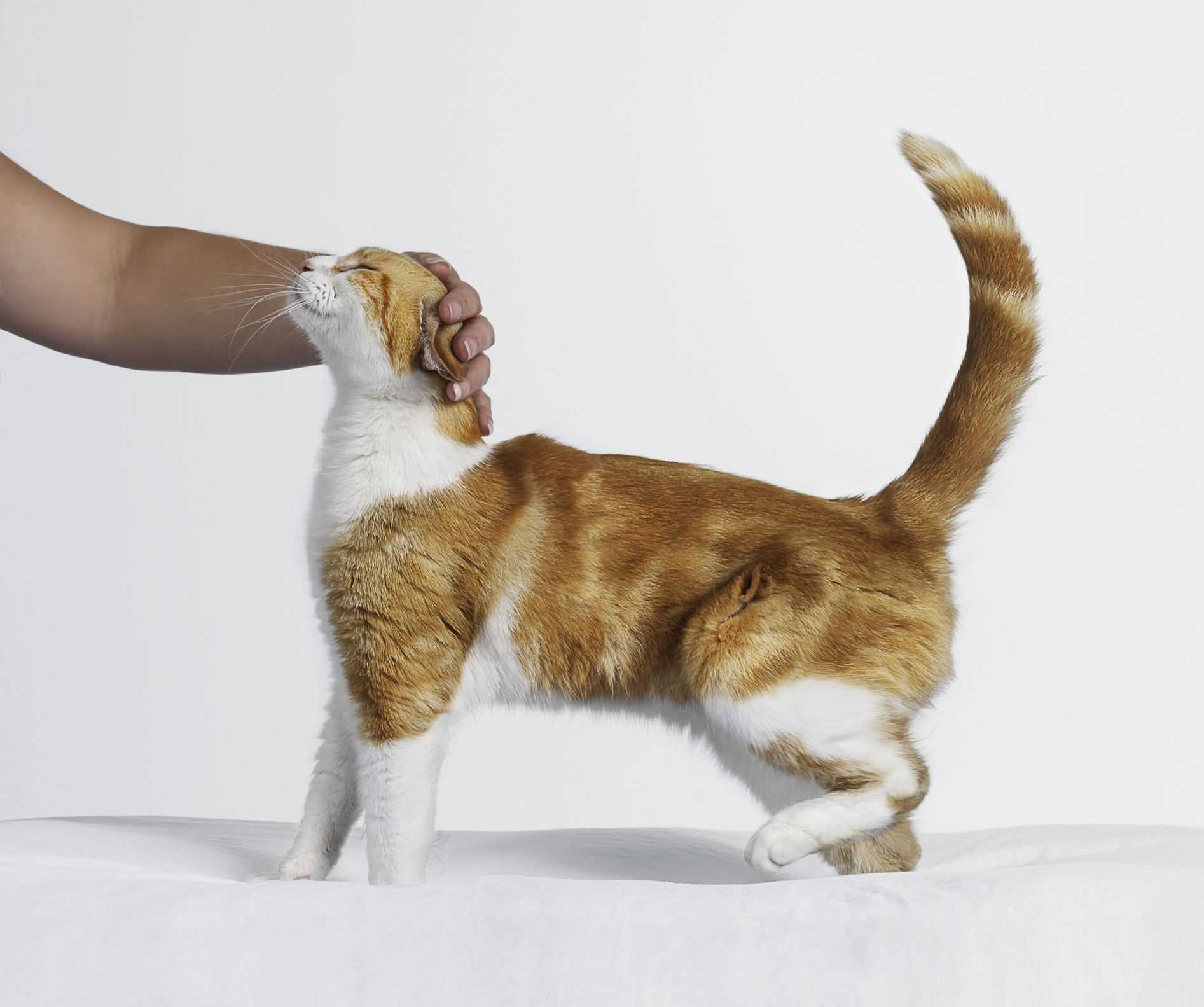Yes, it is possible to perform a sterilization procedure on a female feline in the midst of her estrous cycle. However, it is essential to consult with a veterinarian experienced in this area. Timing can influence the complexity of the surgery and the recovery process.
When a kitty is in estrus, her reproductive organs are engorged with blood, which may increase surgical risks. Nevertheless, many veterinary professionals are equipped to handle such cases effectively. They may recommend waiting until the cycle concludes to minimize potential complications.
As a Scottish Fold with my own perspective, I can say that making informed decisions about procedures is vital for the well-being of our furry companions. Always prioritize consultations with qualified vets to ensure the best care for any pet.
Spaying During Estrus

It’s possible to perform the procedure on a pet experiencing estrus, but this comes with increased risks, particularly concerning bleeding and complications during surgery. The hormonal changes that occur can make the surgery more challenging for veterinarians, affecting their ability to close blood vessels effectively.
Timing Considerations
Scheduling the operation during a quiet period of the cycle may improve outcomes. If the timing is flexible, waiting until the cycle is over is generally advisable. This reduces the chance of complications and allows for a smoother recovery process.
Consulting with a Veterinarian
Before making a decision, it’s essential to consult with a trusted veterinarian. They can assess individual health factors and provide tailored advice. Each case is unique, and a professional evaluation is critical for the best outcome.
Understanding the Risks of Spaying a Cat in Heat
Choosing to undergo surgery during a period of receptivity poses several risks that should be carefully considered. The primary concern lies in the increased blood flow to the reproductive organs, which heightens the probability of excessive bleeding during the procedure.
Additionally, the emotional and physical stress experienced by a cat in this condition can complicate recovery. The surgical site may heal more slowly due to hormonal fluctuations, leading to a higher chance of infection or other complications.
Potential Complications

- Increased bleeding due to enhanced vascularization.
- Higher likelihood of infection at the incision site.
- Prolonged recovery time, requiring more intensive post-operative care.
Recommendations
- Consult a veterinarian to assess the best timing for surgery.
- Consider waiting until the cycle has ended to minimize risks.
- Ensure that the medical team is aware of the current reproductive status to prepare for any additional precautions.
Prioritizing safety and health should guide decisions regarding surgical procedures during this sensitive stage. Planning ahead can help avoid unnecessary complications and ensure a smooth recovery process.
Signs Your Cat is in Heat and What to Expect
If you’re noticing certain behaviors, it’s likely that your pet is experiencing a reproductive cycle. Look for increased vocalization, as she may be more talkative and vocal than usual. This is often a way to attract potential mates.
Another sign is a change in affection levels. She may become overly affectionate, seeking your attention frequently, or she might display more playful and flirtatious behavior. Watch for her rolling on the floor or rubbing against furniture and your legs; this behavior indicates heightened sensitivity and a desire to mate.
Physical Changes

Examine her for physical signs, such as an elevated tail position. When she’s in this phase, she may hold her tail high and to the side, signaling readiness for mating. Additionally, you might observe a slight swelling of her vulva, which can be a clear indication of this cycle.
Increased Activity
Expect her to exhibit more restlessness. She may pace around the house or try to escape outdoors in search of a mate. This behavior can lead to potential risks, so keeping her indoors is advisable. Be prepared for sudden bursts of energy, as she might engage in playful antics or excessive grooming.
Post-Operative Care for Spayed Cats in Heat
After the procedure, it’s crucial to monitor your companion closely. Keep her in a quiet and comfortable space to reduce stress. Limit her activity for at least a week to allow proper healing. A quiet room will help her relax, away from loud noises and other pets.
Ensure she has access to fresh water and her regular food. If she shows signs of lack of appetite or vomiting, contact the veterinarian. It’s common for her to experience some discomfort; however, excessive pain or swelling around the incision site requires immediate attention.
Keep an eye out for any unusual behavior, such as excessive licking of the surgical area. If she tries to lick or bite at the incision, consider using an Elizabethan collar to prevent this. It’s also helpful to check the surgical site regularly for any signs of infection, like redness or discharge.
Maintain her hydration and encourage gentle play. Interactive toys can keep her engaged without overstressing her body. Gradually reintroduce normal activities as she heals, but be prepared to adjust based on her energy levels.
Observe her emotional state. If she seems unusually withdrawn or anxious, consult with your vet for advice on calming techniques or medication. Remember, recovery can take time, and patience is key.
For those curious about memory retention, you might find it interesting to read about how long does cat memory last. Understanding her cognitive behavior can help you tailor her environment for the best recovery experience.
Yes, it is possible to perform a sterilization procedure on a female feline in the midst of her estrous cycle. However, it is essential to consult with a veterinarian experienced in this area. Timing can influence the complexity of the surgery and the recovery process.
When a kitty is in estrus, her reproductive organs are engorged with blood, which may increase surgical risks. Nevertheless, many veterinary professionals are equipped to handle such cases effectively. They may recommend waiting until the cycle concludes to minimize potential complications.
As a Scottish Fold with my own perspective, I can say that making informed decisions about procedures is vital for the well-being of our furry companions. Always prioritize consultations with qualified vets to ensure the best care for any pet.
Spaying During Estrus

It’s possible to perform the procedure on a pet experiencing estrus, but this comes with increased risks, particularly concerning bleeding and complications during surgery. The hormonal changes that occur can make the surgery more challenging for veterinarians, affecting their ability to close blood vessels effectively.
Timing Considerations
Scheduling the operation during a quiet period of the cycle may improve outcomes. If the timing is flexible, waiting until the cycle is over is generally advisable. This reduces the chance of complications and allows for a smoother recovery process.
Consulting with a Veterinarian
Before making a decision, it’s essential to consult with a trusted veterinarian. They can assess individual health factors and provide tailored advice. Each case is unique, and a professional evaluation is critical for the best outcome.
Understanding the Risks of Spaying a Cat in Heat
Choosing to undergo surgery during a period of receptivity poses several risks that should be carefully considered. The primary concern lies in the increased blood flow to the reproductive organs, which heightens the probability of excessive bleeding during the procedure.
Additionally, the emotional and physical stress experienced by a cat in this condition can complicate recovery. The surgical site may heal more slowly due to hormonal fluctuations, leading to a higher chance of infection or other complications.
Potential Complications

- Increased bleeding due to enhanced vascularization.
- Higher likelihood of infection at the incision site.
- Prolonged recovery time, requiring more intensive post-operative care.
Recommendations
- Consult a veterinarian to assess the best timing for surgery.
- Consider waiting until the cycle has ended to minimize risks.
- Ensure that the medical team is aware of the current reproductive status to prepare for any additional precautions.
Prioritizing safety and health should guide decisions regarding surgical procedures during this sensitive stage. Planning ahead can help avoid unnecessary complications and ensure a smooth recovery process.
Signs Your Cat is in Heat and What to Expect
If you’re noticing certain behaviors, it’s likely that your pet is experiencing a reproductive cycle. Look for increased vocalization, as she may be more talkative and vocal than usual. This is often a way to attract potential mates.
Another sign is a change in affection levels. She may become overly affectionate, seeking your attention frequently, or she might display more playful and flirtatious behavior. Watch for her rolling on the floor or rubbing against furniture and your legs; this behavior indicates heightened sensitivity and a desire to mate.
Physical Changes

Examine her for physical signs, such as an elevated tail position. When she’s in this phase, she may hold her tail high and to the side, signaling readiness for mating. Additionally, you might observe a slight swelling of her vulva, which can be a clear indication of this cycle.
Increased Activity
Expect her to exhibit more restlessness. She may pace around the house or try to escape outdoors in search of a mate. This behavior can lead to potential risks, so keeping her indoors is advisable. Be prepared for sudden bursts of energy, as she might engage in playful antics or excessive grooming.
Post-Operative Care for Spayed Cats in Heat
After the procedure, it’s crucial to monitor your companion closely. Keep her in a quiet and comfortable space to reduce stress. Limit her activity for at least a week to allow proper healing. A quiet room will help her relax, away from loud noises and other pets.
Ensure she has access to fresh water and her regular food. If she shows signs of lack of appetite or vomiting, contact the veterinarian. It’s common for her to experience some discomfort; however, excessive pain or swelling around the incision site requires immediate attention.
Keep an eye out for any unusual behavior, such as excessive licking of the surgical area. If she tries to lick or bite at the incision, consider using an Elizabethan collar to prevent this. It’s also helpful to check the surgical site regularly for any signs of infection, like redness or discharge.
Maintain her hydration and encourage gentle play. Interactive toys can keep her engaged without overstressing her body. Gradually reintroduce normal activities as she heals, but be prepared to adjust based on her energy levels.
Observe her emotional state. If she seems unusually withdrawn or anxious, consult with your vet for advice on calming techniques or medication. Remember, recovery can take time, and patience is key.
For those curious about memory retention, you might find it interesting to read about how long does cat memory last. Understanding her cognitive behavior can help you tailor her environment for the best recovery experience.
Yes, it is possible to perform a sterilization procedure on a female feline in the midst of her estrous cycle. However, it is essential to consult with a veterinarian experienced in this area. Timing can influence the complexity of the surgery and the recovery process.
When a kitty is in estrus, her reproductive organs are engorged with blood, which may increase surgical risks. Nevertheless, many veterinary professionals are equipped to handle such cases effectively. They may recommend waiting until the cycle concludes to minimize potential complications.
As a Scottish Fold with my own perspective, I can say that making informed decisions about procedures is vital for the well-being of our furry companions. Always prioritize consultations with qualified vets to ensure the best care for any pet.
Spaying During Estrus

It’s possible to perform the procedure on a pet experiencing estrus, but this comes with increased risks, particularly concerning bleeding and complications during surgery. The hormonal changes that occur can make the surgery more challenging for veterinarians, affecting their ability to close blood vessels effectively.
Timing Considerations
Scheduling the operation during a quiet period of the cycle may improve outcomes. If the timing is flexible, waiting until the cycle is over is generally advisable. This reduces the chance of complications and allows for a smoother recovery process.
Consulting with a Veterinarian
Before making a decision, it’s essential to consult with a trusted veterinarian. They can assess individual health factors and provide tailored advice. Each case is unique, and a professional evaluation is critical for the best outcome.
Understanding the Risks of Spaying a Cat in Heat
Choosing to undergo surgery during a period of receptivity poses several risks that should be carefully considered. The primary concern lies in the increased blood flow to the reproductive organs, which heightens the probability of excessive bleeding during the procedure.
Additionally, the emotional and physical stress experienced by a cat in this condition can complicate recovery. The surgical site may heal more slowly due to hormonal fluctuations, leading to a higher chance of infection or other complications.
Potential Complications

- Increased bleeding due to enhanced vascularization.
- Higher likelihood of infection at the incision site.
- Prolonged recovery time, requiring more intensive post-operative care.
Recommendations
- Consult a veterinarian to assess the best timing for surgery.
- Consider waiting until the cycle has ended to minimize risks.
- Ensure that the medical team is aware of the current reproductive status to prepare for any additional precautions.
Prioritizing safety and health should guide decisions regarding surgical procedures during this sensitive stage. Planning ahead can help avoid unnecessary complications and ensure a smooth recovery process.
Signs Your Cat is in Heat and What to Expect
If you’re noticing certain behaviors, it’s likely that your pet is experiencing a reproductive cycle. Look for increased vocalization, as she may be more talkative and vocal than usual. This is often a way to attract potential mates.
Another sign is a change in affection levels. She may become overly affectionate, seeking your attention frequently, or she might display more playful and flirtatious behavior. Watch for her rolling on the floor or rubbing against furniture and your legs; this behavior indicates heightened sensitivity and a desire to mate.
Physical Changes

Examine her for physical signs, such as an elevated tail position. When she’s in this phase, she may hold her tail high and to the side, signaling readiness for mating. Additionally, you might observe a slight swelling of her vulva, which can be a clear indication of this cycle.
Increased Activity
Expect her to exhibit more restlessness. She may pace around the house or try to escape outdoors in search of a mate. This behavior can lead to potential risks, so keeping her indoors is advisable. Be prepared for sudden bursts of energy, as she might engage in playful antics or excessive grooming.
Post-Operative Care for Spayed Cats in Heat
After the procedure, it’s crucial to monitor your companion closely. Keep her in a quiet and comfortable space to reduce stress. Limit her activity for at least a week to allow proper healing. A quiet room will help her relax, away from loud noises and other pets.
Ensure she has access to fresh water and her regular food. If she shows signs of lack of appetite or vomiting, contact the veterinarian. It’s common for her to experience some discomfort; however, excessive pain or swelling around the incision site requires immediate attention.
Keep an eye out for any unusual behavior, such as excessive licking of the surgical area. If she tries to lick or bite at the incision, consider using an Elizabethan collar to prevent this. It’s also helpful to check the surgical site regularly for any signs of infection, like redness or discharge.
Maintain her hydration and encourage gentle play. Interactive toys can keep her engaged without overstressing her body. Gradually reintroduce normal activities as she heals, but be prepared to adjust based on her energy levels.
Observe her emotional state. If she seems unusually withdrawn or anxious, consult with your vet for advice on calming techniques or medication. Remember, recovery can take time, and patience is key.
For those curious about memory retention, you might find it interesting to read about how long does cat memory last. Understanding her cognitive behavior can help you tailor her environment for the best recovery experience.







